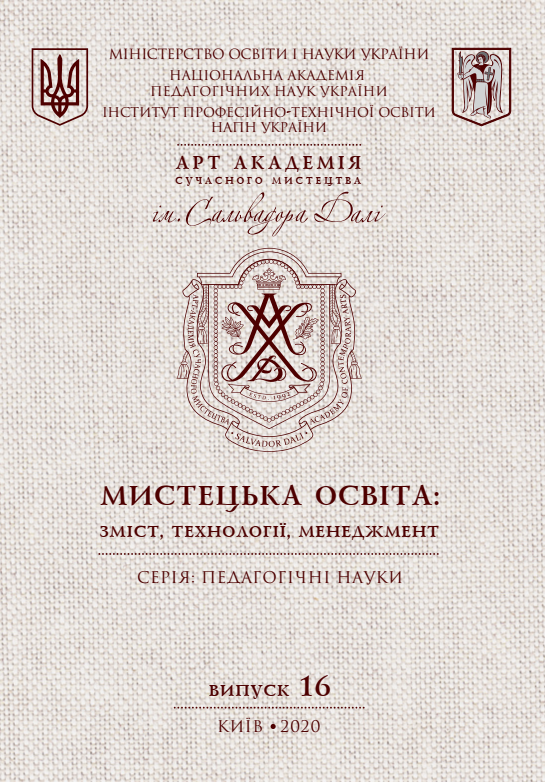METHODS OF REFLECTIVE HEURISM IN THE CREATIVE SOLUTION OF THE TASKS OF ART EDUCATION
Abstract
The article presents the methods of reflective heuristics. The classical methods of reflexive heuristics are the Socrates method and the Descartes method. The contemporary ones are: the method of G. Poly and the systemic approach as well as the vision of A. Góralski. The main task of the Socratic method is to assist man in the search for truth. The basic means of achieving the truth is self-reflection, leading to rational action, and the method – dialogue.
Descartes' method is based on the dualization of knowledge, namely that certain knowledge is justified knowledge, and that certain knowledge is available – it only needs to be obtained methodically. For Descartes, truth means certainty; true cognition is certain cognition, that is, clear and distinct. Descartes was guided by the principle of reducing all that is complex to simple and elementary.
G. Polya considered the basic goal of all teaching to "teach to think". Thinking is the process by which present facts suggest other facts or truths in such a way that from those facts an opinion of others is formed. However, the most specific feature of thinking is that it enables the production of information new to the subject, therefore thinking should be treated primarily as a creative process that leads to the acquisition of new knowledge that allows you to go beyond the given information. The act of thinking consists not only in producing information, but also in selecting it.
According to A. Góralski, creativity belongs to two areas: the area of Nature and the area of Culture. These areas, although appearing in different and different forms, are identical. The qualification of creativity to these areas emphasizes the holistic nature of the world, and at the same time reveals the possibility of complements, revealing the specificity of these complements – the world of Nature, the world of Culture.
References
Góralski A. Teoria twórczości. Warszawa: Wydawnictwo APS, 2003. 215 s.
Góralski A. Dzielo George Polya jako realizacja intuicjonizmu syntetycznego. Maszynodruk, 2011. 48 s.
Olczak M. Jakość dostrzegania problemów i zadań poznawczych – istotny czynnik wychowania do twórczości. Łódź: Politechnika Łódzka, 511 s.
Polya G. Mathematical Methods in Science. Studies in Mathematics, 1963. Vol. XI. 249 s.
Polya G., 1975. Odkrycie matematyczne. O rozumieniu, uczeniu się i nauczaniu rozwiązywania zadań. Warszawa: Wydawnictwa Naukowo-Techniczne. 439 s.
Polya G. Jak to rozwiązać? Warszawa: PWN, 1964. 251 s.
Polya, G. Induction and Analogy in Mathematics. Mathematics and Plausible Reasoning, 1954.Vol 1. 293 s. Princeton.
Polya, G. Jak to rozwiązać? Warszawa: PWN, 1993. 251 s.

This work is licensed under a Creative Commons Attribution-NonCommercial 4.0 International License.

